I put a lot of effort into the landing, when the real mission hadn't even started. Therefore, this time we will summarize the achievements of Curiosity from Mars for the 61 days it stays there. Martian days of course.
Interesting things happen there…
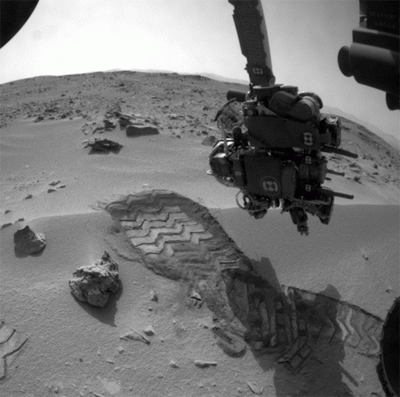
A note before we begin: all the images below can be significantly enlarged by clicking on them (unfortunately this is only true for images In the original blog, and not on the science website, A.B.). Secondly, devices that are mentioned in this record by their name, which usually consists of a sequence of foreign letters, are mentioned in detail in the record "What equipment do you take to Mars?", for your reference. And now we can begin.
Let's start with the landing video. The video consists of images from the MARDI landing camera, which took 4 images per second.
In the production of the video, they used a tool that completes the missing frames by interpolation from the existing frames. The rhythm is preserved as photographed, and these are the true colors of Mars as Curiosity saw them while it was lowered to the ground.
This is the first time we have a film showing a landing on Mars. have fun
The first period in the life of any space mission, after unloading the facilities and assemblies that were folded up, is the testing period. The operating team activates the devices carried by the spacecraft one after the other according to a procedure prepared ahead of time, and each device is tested to make sure it works as expected.
The test results are compared to data from a previous test performed before the launch, or to data generated from a model (because not every device will work on Mars as it does on Earth), and the changes are analyzed.
Curiosity has not yet finished this period in its life, but nevertheless things are progressing at a satisfactory pace.
Curiosity landed at a site called Yellowknife. The landing point is now called Bradbury's Landing after the science fiction writer who dealt a lot with matters of landing on Mars and was in close contact with NASA. Ray Bradbury passed away just a few months ago.
Curiosity's first destination is called Glenelg. It is a meeting point between three different types of soil, or so it seems from space. The intention is to get there and for the first time carry out drilling in the rocks and analysis of the soil for all three types. This way it will be possible to more correctly interpret other space photographs in which the same characteristics are visible.
Glenelg is located about 500 meters from the landing point, and Curiosity has already traveled most of the way. The point is that you drive slowly, to study the behavior of Curiosity's movement algorithms (it drives almost autonomously), and you also stop every time you find something interesting. Each stoppage can last a week or even longer. Curiosity will probably arrive at the Glenelg site in only three weeks.
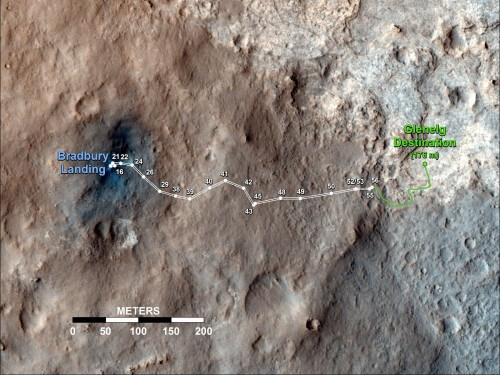
In the meantime, the laser of the ChemCam camera was activated, which allows substances to be identified by the light they emit when they are hot, even from a distance of several meters.
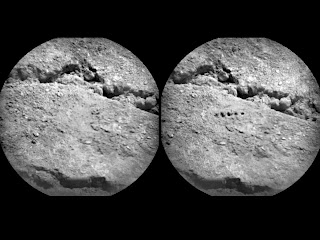
Close-up photos of rocks that were on the way were taken, and it looks something like this:
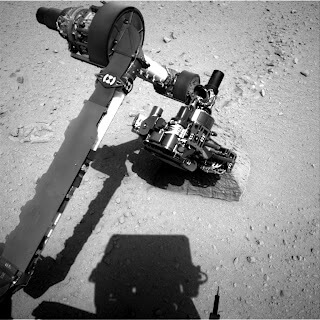
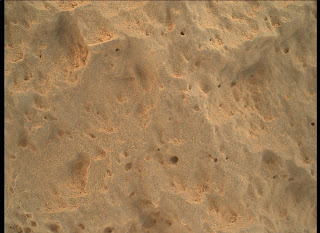
There are also self-photographs designed to examine the rover's instrument integrity:
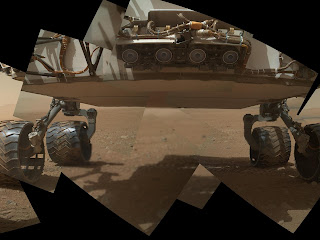
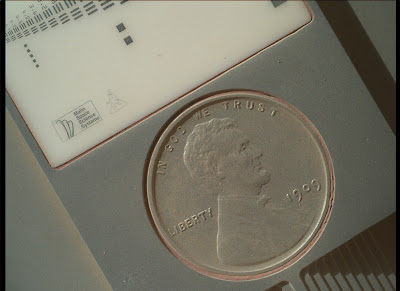
The turret at the end of the arm, and between its instruments a MAHLI camera (covered with a dust shield) and its lighting LEDs around it, and to the right the DRT cleaning brush.
A week ago it was announced that Curiosity had discovered something that all the landings to Mars had failed to find so far; There is clear evidence that liquid water flowed across the surface of Mars in the distant past. Curiosity discovered pebbles that look identical to those found in many streams on Earth:
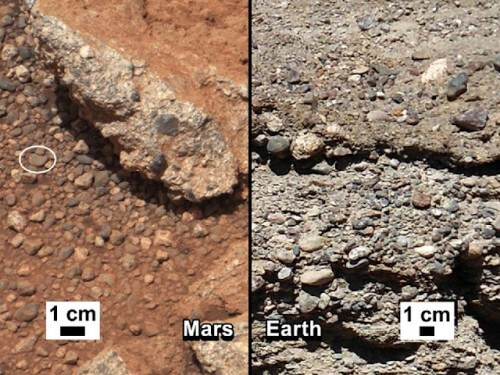
The next step, which they started today, is the collection of solid samples, i.e. sand. So far, Curiosity has progressed over rugged terrain, where it is not possible to extract fine sand as required for the mineral analysis instruments. The rover has now arrived at the site where a small sandbox is located. The place is called Rocknest, and there is a place to test the sand. It's amazing to see what detail can be reached, again, for the first time on Mars:
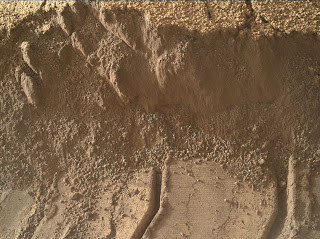
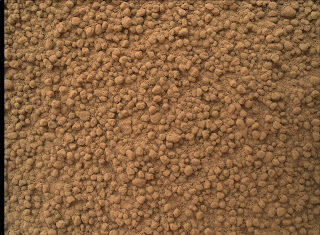
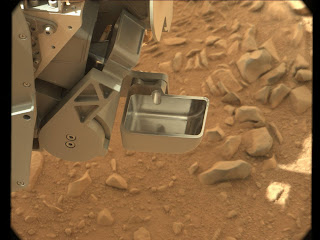
The first collection will be for cleaning purposes only, and will not be entered into CheMin or SAM laboratories.
The reason is this: after collection, the sand passes through small cavities of a device called CHIMRA, which is designed to sort by filtering the grains according to their size. This is done by a series of movements of the arm that moves the sand from one cell to another inside the device. To move the sand efficiently, and to prevent grains from being left behind, the process is done while vibrating at accelerations of 8 G over several hours. Since Curiosity's CHIMRA has not been used since it was manufactured, there are bound to be oily residues from the manufacturing processes inside the cavities, and there is no better way to clean them than by sandblasting. For this purpose the first sample was collected. (Link to a video with an experiment of collecting the sand on the surface of the earth.)
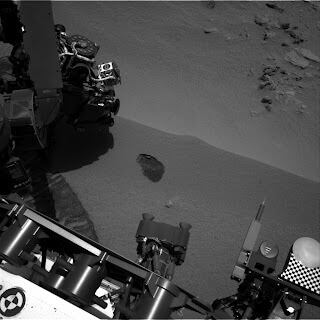
And what now? Curiosity will remain at Rocknest for two to three weeks, performing a small number of material collection and instrument cleaning operations. After that, she will continue her journey to Glenelg, where she is expected to drill into the rock for the first time, and collect the resulting powder. The mineral identification laboratories with real samples will also be operated there for the first time. This part of the mission is expected to be completed by the end of 2012, and then start moving several kilometers south, to the slopes of Mount Sharp, where interesting geological phenomena await us that need to be explored.
Sounds to me like this is going to be a very interesting year.

4 תגובות
Amazing that if humans want to produce durable devices,
They can.
When on earth?
Ronnie, the poles of Mars are mostly covered in dry ice, ie solid carbon dioxide, not water.
In the Pole there are two problems in terms of landing - one, it is so cold there that it will be difficult to operate the vehicle for a long time. The second is that we don't have proven technology for driving on ice (maybe we even need to skate on it?).
The previous mission from 2007 - Mars Polar Lander - landed in a very northern region, on the edge of the ice cap, but was not equipped with wheels.
Curiosity was designed for geological research, which can only be done in a dry area, but Shlamim played an important role in its design.
Why didn't they land Curiosity on one of the poles? There must be water or ice, maybe even microscopic life?
As you can see in the first picture - Curiosity examines the footprints of the boots of a previous visitor to Mars.